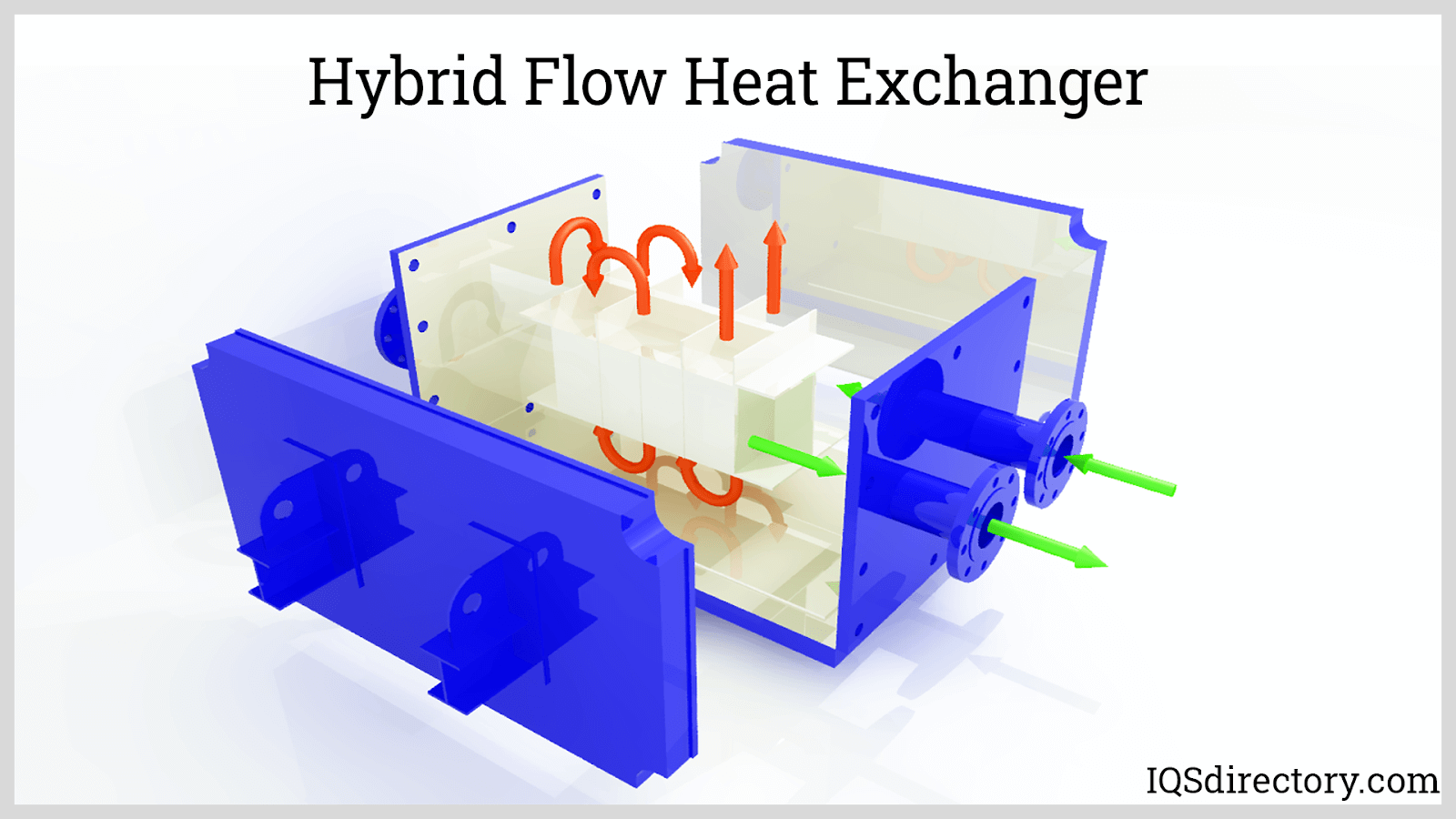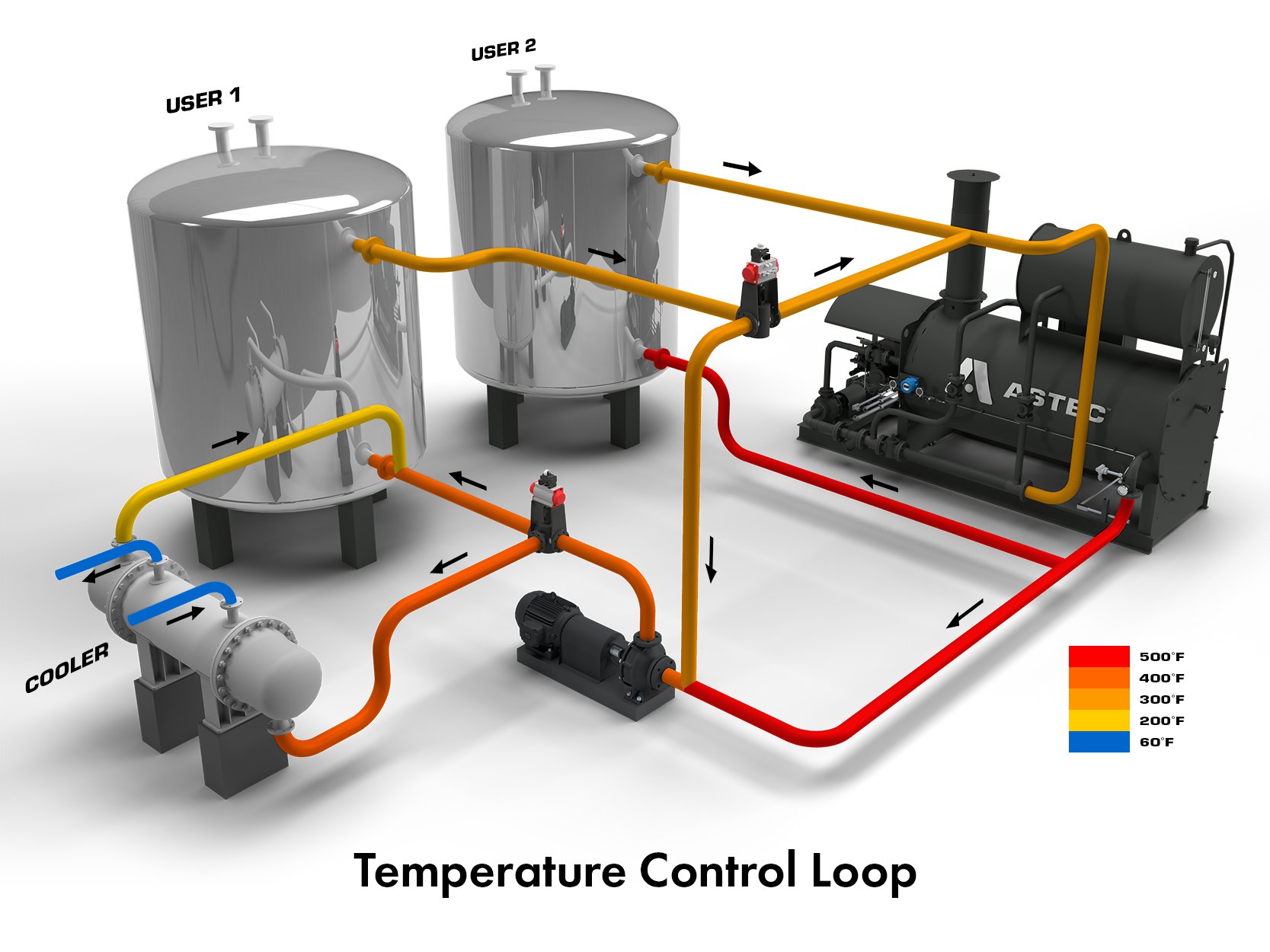DVS Heat Transfer Systems: A Step-by-Step Guide to Smarter IoT Integration
Wiki Article
Innovations in Heat Transfer Solutions: What You Need to Know for Optimal Performance
Innovations in Heat transfer systems are changing efficiency throughout various sectors. Advanced products like graphene and nanofluids guarantee significant improvements in thermal conductivity. At the same time, the assimilation of IoT and device knowing provides chances for real-time surveillance and boosted power efficiency. The landscape of thermal administration is quickly developing. Understanding these advancements is essential for attaining excellent system performance and sustainability in the future. What certain developments are forming this improvement?Arising Materials for Enhanced Heat Transfer

Advanced Heat Exchanger Layouts
While traditional Heat exchangers have actually served their objective in different applications, progressed designs are now arising to satisfy the raising demands for effectiveness and performance. These cutting-edge designs, such as plate, shell-and-tube, and finned-tube Heat exchangers, integrate enhanced surface area locations and improved flow patterns to increase thermal transfer prices. On top of that, compact designs enable decreased area needs without endangering performance. Advanced materials, such as composites and corrosion-resistant alloys, furthermore boost toughness and performance under extreme conditions. Simulation modern technologies and computational fluid dynamics are significantly used to improve these styles, ensuring peak Heat transfer attributes. As markets seek to decrease power intake and optimize result, the fostering of innovative Heat exchanger designs is pivotal in achieving these purposes.The Function of Nanotechnology in Heat Transfer
Nanotechnology plays a crucial function in improving thermal conductivity within Heat transfer systems. By controling materials at the nanoscale, researchers have actually attained considerable enhancements in energy efficiency. These developments not only maximize efficiency however likewise add to even more sustainable energy services.Enhanced Thermal Conductivity
Considerable developments in thermal conductivity have emerged via the application of nanotechnology, changing Heat transfer systems across different industries. By including nanoparticles right into Heat transfer fluids and materials, researchers have actually attained amazing increases in thermal conductivity. These nanoparticles, such as carbon nanotubes, graphene, and steel oxides, improve the Heat transfer buildings because of their high surface area and special thermal features. The resulting composites show improved performance in applications ranging from electronic devices cooling down systems to renewable resource innovations. The capacity to tailor the size, form, and composition of nanoparticles permits for enhanced thermal management services. Therefore, nanotechnology remains to play an essential role in the advancement of a lot more reliable and efficient Heat transfer systems, paving the method for boosted industrial applications.
Energy Efficiency Improvements

Assimilation of IoT in Heat Transfer Solutions
The combination of IoT in Heat transfer systems introduces the implementation of smart sensors that enhance operational performance. These sensors allow real-time data monitoring, permitting prompt adjustments and optimizations. This technical innovation has the possible to considerably enhance efficiency and power administration in Heat transfer applications.Smart Sensors Execution
As Heat transfer systems advance, the assimilation of smart sensing units with the Internet of Things (IoT) has actually arised as a transformative technique. These sensing units enable real-time monitoring of temperature, circulation, and pressure prices, boosting system performance and dependability. By gathering and transmitting information, they promote positive upkeep, decreasing the risk of system failures. Furthermore, clever sensing units add to energy savings by refining operational parameters based upon environmental conditions. Their capacity to assess patterns and abnormalities enables educated decision-making, ensuring peak performance of Heat transfer systems. As sectors progressively embrace this technology, the execution of wise sensing units stands to revolutionize how Heat transfer systems are handled, paving the method for greater sustainability and boosted performance outcomes.Real-Time Information Monitoring
How can real-time information keeping an eye on improve the effectiveness of Heat transfer systems? By incorporating Internet of Points (IoT) innovation, Heat transfer systems can utilize continuous data collection from wise sensing units. This real-time monitoring enables instant analysis of circulation, stress, and temperature prices, making it possible for operators to determine inefficiencies quickly. Changes can be made to optimize performance, DVS Heat Transfer Systems lower power usage, and expand equipment life-span. Furthermore, predictive upkeep can be executed, minimizing unforeseen downtime and pricey repair work. The capability to visualize performance metrics through dashboards boosts decision-making, cultivating a positive method to system management. Inevitably, real-time data keeping an eye on not just improves operational performance however likewise contributes to sustainability goals within industrial procedures.Power Effectiveness and Sustainability Trends
Energy performance and sustainability fads are reshaping the landscape of Heat transfer systems, driving innovation and compliance throughout different industries. Organizations are increasingly prioritizing energy-efficient styles to minimize functional prices and decrease ecological influences. The integration of renewable resource sources is ending up being much more prevalent, enabling Heat transfer systems to operate sustainably while satisfying regulative demands. Additionally, innovations in materials and innovations advertise lower power consumption and improve total performance. Lifecycle assessments are likewise gaining traction, allowing companies to review the ecological influence of Heat transfer systems from production to disposal. This concentrate on sustainability not just sustains company responsibility yet likewise positions companies competitively in a market where customers increasingly favor eco-friendly remedies. Power efficiency and sustainability continue to be crucial considerations for future developments in Heat transfer technology.Technologies in Thermal Management Solutions
While the need for reliable Heat transfer proceeds to rise, innovations in thermal monitoring solutions are arising to attend to both efficiency and sustainability obstacles. Advanced materials, such as stage adjustment materials and nanofluids, are being created to enhance Heat transfer effectiveness - DVS Heat Transfer Systems. These products improve thermal conductivity and permit for better temperature law in various applications. In addition, technologies like active thermal control systems are obtaining traction, allowing real-time changes to manage Heat circulation effectively. These systems add to power cost savings and reduce the environmental influence of thermal procedures. The assimilation of IoT in thermal monitoring assists in tracking and anticipating upkeep, ensuring optimized performance and durability of Heat transfer systems. Generally, these advancements represent significant strides toward more sustainable thermal administration techniquesFuture Instructions in Heat Transfer Modern Technology
Arising developments in thermal administration services indicate an encouraging future for Heat transfer modern technology. Scientists are significantly concentrating on creating materials with superior thermal conductivity and boosted power efficiency. Advancements such as nanofluids, which have put on hold nanoparticles, use considerable renovations in Heat transfer efficiency. Furthermore, the combination of smart products that adjust to differing temperature problems is obtaining grip, permitting for more reliable and responsive systems. The rise of additive manufacturing methods is likewise enabling the layout of complicated Heat exchanger geometries that optimize fluid flow. Moreover, the application of artificial intelligence formulas is expected to transform the optimization of Heat transfer systems, facilitating anticipating maintenance and efficiency enhancement. Jointly, these improvements are poised to change the landscape of Heat transfer technologies in various sectors.
Often Asked Inquiries

Exactly how Do I Select the Right Heat Transfer System for My Application?
Picking the ideal Heat transfer system involves evaluating application requirements, consisting of temperature level arrays, liquid properties, and performance demands. Examining system kinds, upkeep considerations, and cost-effectiveness also plays an important duty in making an educated choice.What Are the Maintenance Requirements for Advanced Heat Exchangers?
Maintenance needs for innovative Heat exchangers normally include routine inspections, keeping an eye on for leakages, cleansing of surface areas, and guaranteeing ideal flow rates. Following producer standards warranties effective operation and lengthens the equipment's life expectancy.
Exactly How Do Ecological Aspects Affect Heat Transfer Efficiency?
Ecological aspects considerably affect Heat transfer efficiency. Variants in moisture, airflow, and temperature level influence thermal conductivity and convective Heat transfer, eventually influencing system performance and requiring consideration throughout the layout and operation of Heat transfer systems.What Safety Requirements Apply to Heat Transfer Equipments?
Safety and security standards for Heat transfer systems normally consist of standards from organizations such as ASME and ASTM. DVS Heat Transfer Systems. These requirements address materials, style, and functional techniques to guarantee reliability, efficiency, and protection against dangers in numerous applications
Just How Can I Fix Typical Heat Transfer System Issues?
Fixing typical Heat transfer system issues involves looking for leaks, guaranteeing appropriate fluid flow, examining insulation stability, and confirming temperature differentials. Identifying these aspects can aid maintain system efficiency and prevent further issues.Nanotechnology plays an important role in enhancing thermal conductivity within Heat transfer systems. Substantial developments in thermal conductivity have emerged through the application of nanotechnology, transforming Heat transfer systems across numerous sectors. Improvements in thermal conductivity through nanotechnology have paved the way for impressive renovations in power effectiveness within Heat transfer systems. Energy effectiveness and sustainability patterns are reshaping the landscape of Heat transfer systems, driving technology and conformity across numerous markets. The integration of IoT in thermal administration assists in surveillance and anticipating maintenance, ensuring maximized performance and longevity of Heat transfer systems.
Report this wiki page